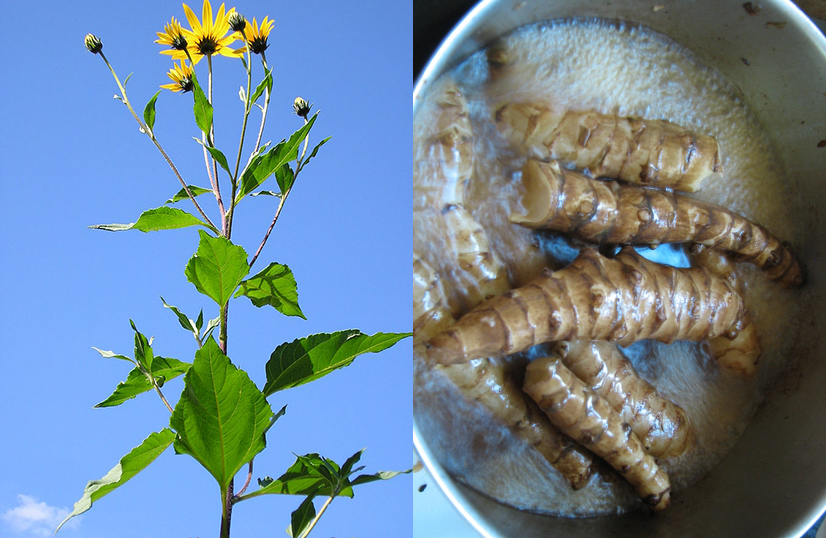
If you have seen my Theme Reveal for the A2Z Challenge 2022, then you will know that I am writing about becoming Vegetarian gradually as a response to the crisis in food supply chains sparked by the pandemic and made worse by the WAR in Ukraine. As well, I am keeping to the theme I originally planned of food which can be eaten in its own right as well as becoming an ingredient in other dishes…

Once again I was casting around for what to bring to you for the letter J – all I had was Jerusalem Artichoke – which is one of my favourite vegetables – especially for including in a brown vegetable soup in which, together with carrots and onions, it brings a sweetness but also a great rich, roundness of earthy flavour, add a drop of sherry and your soup will be positively ambrosial…
Once again also, I am indebted to Wikipedia for a plethora of facts which both surprised and edified me regarding the Jerusalem Artichoke, many of which relate to how it got it’s name since it has no relationship to Jerusalem and neither is it any form of Artichoke. The artichoke bit is easy, the French explorer, Samuel de Champlain, who first brought the tubers back to Europe from the New World, opined that they tasted somewhat like artichokes, though others thought the taste more like Chard. The plant does have a familial relationship to Sunflowers – the Italian word for which is Girasole – they are both members of the Helianthus family – and Girasole gradually corrupted to Jerusalem.
What was particularly interesting to learn was that not only can Jerusalem Artichokes be eaten raw (unlike potatoes) but they are particularly useful for diabetics since their starch is in the form of Inulin (not insulin) which is not absorbed by the human gut. On the downside, lower down in the colon, they can make you fart a lot… A small price to pay for this delish vegetable which seems to be having a bit of a moment. My wife loves to watch cookery competition shows and one chef recently prepared Jerusalem Artichokes Five Ways – he knew a good thing when he saw one!
Jerusalem Artichokes can be used to make Ethanol fuel as well as, in Germany, a spirit called Topinambur or Artichoke Brandy. The inulin is also extracted on a commercial scale as a form of dietary fibre in food manufacturing. So there you have it – a vegetable rich in flavour, fibre, vitamins and with a sweet taste that does you no harm – what’s not to like? You can find more recipes here.
Oh! And Jerusalem Artichokes are easy to grow and because they reach seven to nine feet tall, they can be used to create annual mazes…
Back on our quest to increase the intake of vegetarian dishes, or rather find alternatives to increasingly expensive meat dishes (all complaints to the Kremlin please), we come to juicing. Adults may quite enjoy juice and smoothies anyway, but when it comes to children (or adults) who have to be tricked into eating one or more vegetables, the juicing and smoothing are the way to hide the smoking gun. Oh sorry – you don’t need to shoot vegetables, although vegetable preparation is full of distressing terms, such as, “tear out the heart of a lettuce” or “macerate a clove of garlic” there you go – Vicious Vegetarianism….
Those of you with small children may have found the need for this strategy… Properly speaking – a Juicing Machine, finely grates vegetables or fruit and then spins the juice out of it leaving behind quite large quantities of, still nutritious pulp which, if you don’t want to have a guilty conscience, ruin your budget or fill up your bin, you need to find creative uses for – dips, soups and savoury sauce extenders. Blending a smoothie, on the other hand, avoids all these creative soul-searchings by giving you the whole fruit or vegetable blended to down in one! My advice – juicers are more trouble than their cleaning is worth – get a handheld stick-blender or a Nutri-Bullet.
